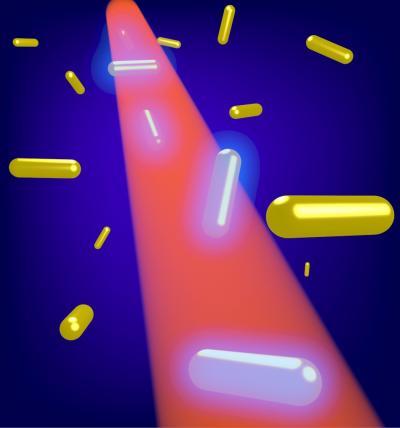"Plasmonic nanostructures are of great current interest as chemical sensors, in vivo imaging agents, and for photothermal therapeutics," explained David G. Cahill, a Willett Professor and head of the Department of Materials Science and Engineering at the University of Illinois at Urbana-Champaign. "Applications in imaging and sensing typically involve the emission of light at a different wavelength than the excitation, or 'secondary light emission'. The interpretation of resonant secondary light emission in terms of fundamental processes has been controversial for 40 years."
"In this work, we point out that resonant electronic Raman scattering and resonant fluorescence may both be useful descriptions of the secondary emission, Cahill added. "Better understanding of these principles and their limitations can result in improved biological and medical imaging modalities."
Fluorescence is a relatively familiar process by which light of one color or wavelength is absorbed by a material, e.g., an organic dye or a phosphor, and then light is emitted at a different color after a brief interval of time. In Raman scattering, the wavelength of light is shifted to a different color in an instantaneous scattering event. Raman scattering is not common in everyday life but is a critical tool of analytical chemistry.

This is an illustration of resonant electronic Raman scattering and resonant fluorescence.
(Photo Credit: Jingyu Huang, University of Illinois)
"Light emission from plasmonic nanostructures at wavelengths shorter than the wavelength of pulsed laser excitation is typically described as the simultaneous absorption of two photons followed by fluorescence, which is used a lot in biological imaging," explained Jingyu Huang, first author of the paper that appears in the Proceedings of the National Academy of Sciences. "However, we found that by modeling the emission as Raman scattering from electron-hole pairs can predict how the light emission depends on laser power, pulse duration, and wavelength.
"Since we understand more of the mechanism of this kind of light mission, we can help to design the biological and medical imaging experiments better, and at the same time we can also have more insight into the broad background of surface-enhanced Raman scattering which is also related to this kind of light emission, Huang added.